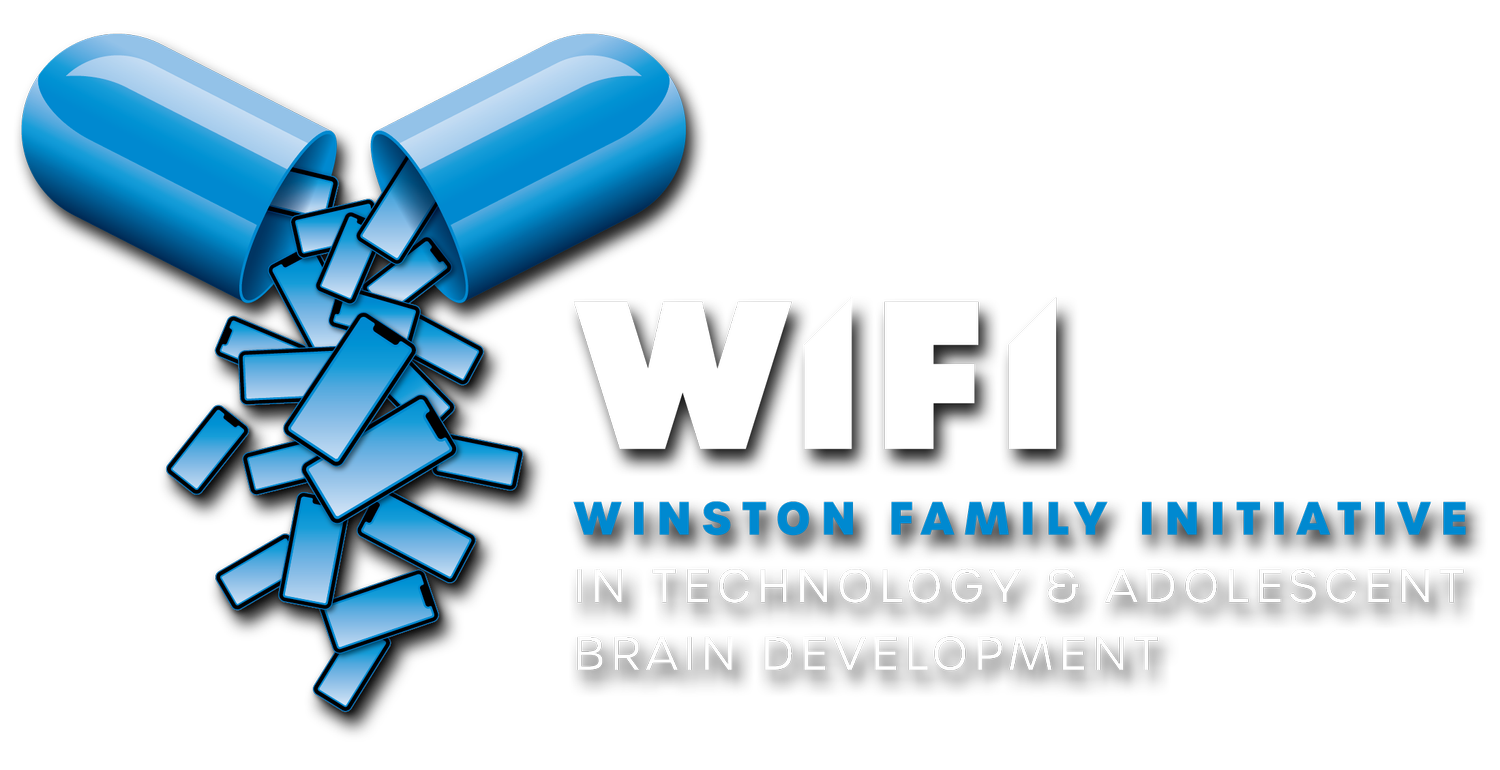
Curriculum
Our free curriculum about how adolescents’ brain development affects their technology use and well-being was developed in a partnership between UNC researchers and middle school educator Kelley Brill. It meets National Health Education Standards for middle schoolers.
Check out our modules below!
Module #1
The Adolescent Brain — Why Is It Different?
Introduction
The emotional rollercoaster of adolescence is a time of tremendous development and opportunity. This module guides students through the biological brain changes they are experiencing and empowers them to take control of their technology use through reflective strategies and an experiential technology abstinence challenge.
Course Description
Students explore the changes in brain development during the adolescent years. This unit focuses on the adolescent brain’s sensitivity to reward, which makes adolescents uniquely vulnerable to positive and negative effects of technology use. Through a technology abstinence activity, students will apply reflective strategies to create a more mindful technology experience.
Learning Objectives
Describe physical, cognitive, emotional, social, and psychological changes in adolescence.
Identify the reward processing regions of the brain and how reward affects adolescents' decision making.
Create a plan using the R.E.C.K. strategy to manage technology use.
Reflect on personal technology use.
Module #2
What Is the Science Behind Why Adolescents Are Motivated to Use Technology?
Introduction
The temptation to check emails, text messages, and social media can be persistent. Why do we have this nagging feeling? Answers to this question are revealed through an exploration of reward sensitivity of the adolescent brain and an analysis of how technology use reinforces reward-seeking in adolescents.
Course Description
Adolescents are especially motivated to seek out rewards, including when using technology. This module will explore ways in which curiosity, social feedback, and reward conditioning stimulate reward processing regions of the brain and promote technology use.
Learning Objective
Describe how the brain processes reward.
Explore how curiosity and social feedback trigger feelings of reward.
Understand how the process of reward conditioning applies to social media and technology use.
Explore how social media and technology is designed to use reward in order to keep users engaged.
Module #3
Making Connections
Introduction
The way adolescents connect has changed dramatically since the digital revolution. Ease of access and immediacy of information has increased the ways in which we communicate. Discover the science of why adolescents are drawn to social media and explore strategies to create healthy technology interactions.
Course Description
In this module, students will explore the ways adolescents socially connect, how technology has changed social connectedness, and the effects of social connectedness on the adolescent brain. Strategies for healthy technology use will be explored to enhance positive technology interactions.
Learning Objectives
Explore how different ways of social connection affect how information is conveyed and received.
Understand the need for adolescents to connect.
Understand the role of social media and how it affects you and those around you.
Explore how online interactions may intrude on in-person connections.
Understand how peers can influence decision making, both offline and online.
Module #4
Positive and Negative Effects of Social Media
Introduction
How are adolescents harmed or helped by social media use? Discover what motivates adolescents to engage in a medium that impacts their social and emotional well being.
Course Description
Connecting through social media can have positive and negative effects on mental health and well-being. In this module, students explore how interacting through technology is essential yet can produce negative outcomes. Anti-bullying strategies, role-playing, and reflection techniques are used to identify positive and negative uses of social media.
Learning Objective
Understand potential motivations for using social media.
Evaluate information about the positive and negative effects of online interactions.
Identify cyberbullying as a negative means of self-expression.
Explore ways to mitigate cyberbullying.
Define body image and explain how it is affected by media and social media.
Module #5
Sleep and Technology
Introduction
Sleep is needed for a body and brain to rest. Fifty-eight percent of middle schoolers report that they do not get enough sleep. The constant barrage of screen time for school work, entertainment, and social media are consuming adolescents’ wake time. Explore the biological importance of sleep and the consequences of sleep disruption due to technology use.
Course description
This unit will explore the importance of sleep, the consequences of lack of sleep due to screentime, and solutions for getting an effective night of sleep.
Learning Objective
Identify the biological importance of sleep.
Understand how technology disrupts sleep.
Describe consequences of lack of sleep.
Create solutions for using technology without sleep disruption.
Module #6
How Adolescents Learn From Digital Media
Introduction
Seventy-eight percent of teens feel it’s important to follow current events, and 54 percent of the same teens get their news from social media. Discover how teens get information from social and digital media, and learn how to evaluate credible news sources.
Course Description
Identifying a credible source on digital media has become increasingly difficult. Students will explore examples of fake news and strategies to reveal misinformation and recognize bias. This module will engage students in activities that will give them tools to distinguish between reliable and unreliable information obtained on the internet.
Learning Objectives
Understand how learning from digital sources is vulnerable to bias.
Develop an understanding of how to identify reputable news sources and positive media influences.
Think critically about information presented on the internet.
